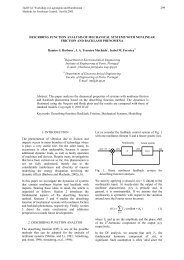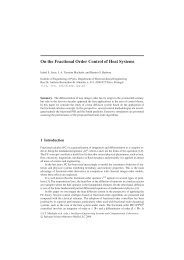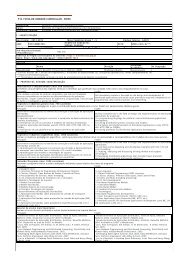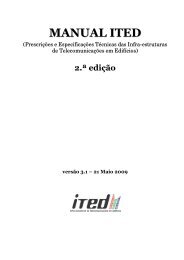AUTOMOTIVE ELECTRICAL CIRCUITS AND WIRING
AUTOMOTIVE ELECTRICAL CIRCUITS AND WIRING
AUTOMOTIVE ELECTRICAL CIRCUITS AND WIRING
Create successful ePaper yourself
Turn your PDF publications into a flip-book with our unique Google optimized e-Paper software.
Once the starter is checked and repaired as needed, it should be reassembled, making<br />
sure that the starter brushes are seated. Align the housings and install the bolts<br />
securely. Install the starter in the opening in the flywheel housing and tighten the<br />
attaching bolts to the specified torque. Connect the cable and wire lead firmly to clean<br />
terminals.<br />
STARTING MOTOR CIRCUIT TESTS<br />
There are many ways of testing a starting motor circuit to determine its operating<br />
condition. The most common tests are as follows:<br />
The starter current draw test is used to measure the amount of amperage used by the<br />
starting circuit.<br />
The starter circuit voltage drop tests (insulated circuit resistance test and starter ground<br />
test) are used to locate parts with higher than normal resistance quickly.<br />
WARNING<br />
Do NOT crank the engine for more than 30 seconds or starter damage can result. If the<br />
starter is cranked too long, it will overheat. Allow the starter to cool for a few minutes<br />
if more cranking time is needed.<br />
Starting Circuit Voltage Drop Tests<br />
A voltage drop test will quickly locate a component with higher than normal<br />
resistance. This test provides an easy way of checking circuit condition. You do NOT<br />
have to disconnect any wires and components to check for voltage drops. The two<br />
types of voltage drop tests are the insulated circuit resistance test and the starter<br />
ground circuit test.<br />
INSULATED CIRCUIT RESISTANCE TEST<br />
The insulated circuit resistance test checks ail components between the positive<br />
terminal of the battery and the starting motor for excess resistance.<br />
Using a voltmeter, connect the leads to the positive terminal of the battery and the<br />
starting motor output terminal.<br />
With the ignition or injection system disabled, crank the engine. Note the voltmeter<br />
reading. It should not be over 0.5 volts. If voltage drop is greater, something within the<br />
circuit has excessive resistance. There may be a burned or pitted solenoid contact,<br />
loose electrical connections, or other malfunctions. Each component is then to be<br />
tested individually.<br />
STARTER GROUND CIRCUIT TEST<br />
<strong>AUTOMOTIVE</strong> <strong>ELECTRICAL</strong> <strong>CIRCUITS</strong> <strong>AND</strong> <strong>WIRING</strong> 51/ 101

















